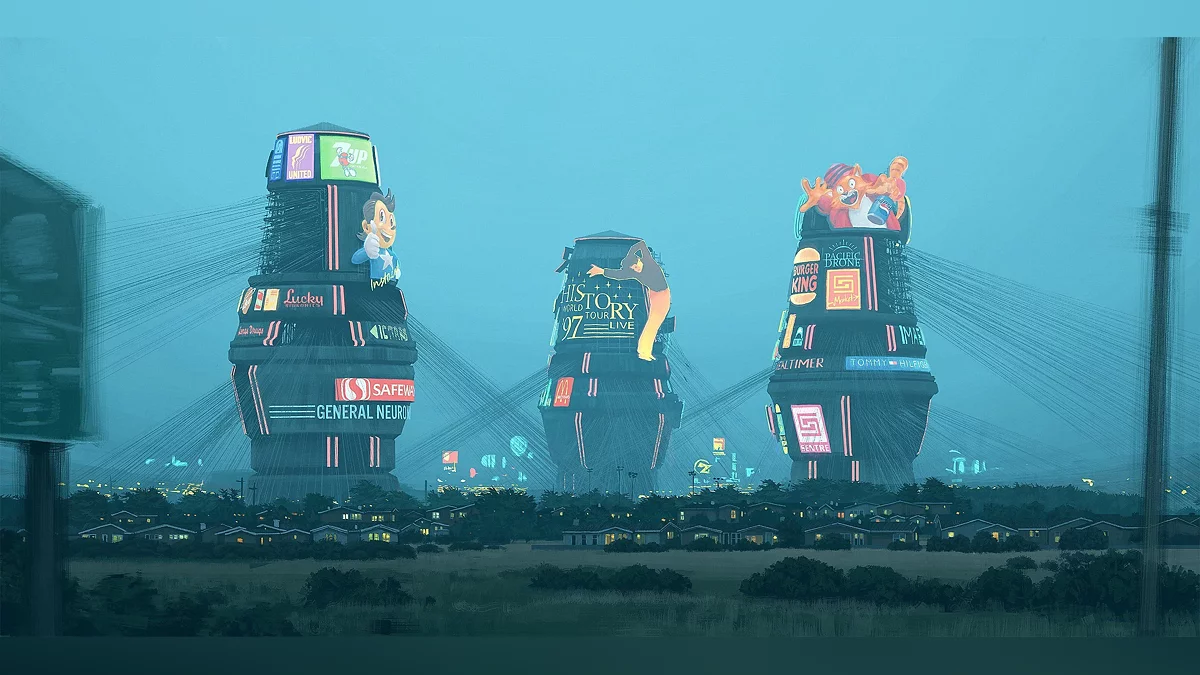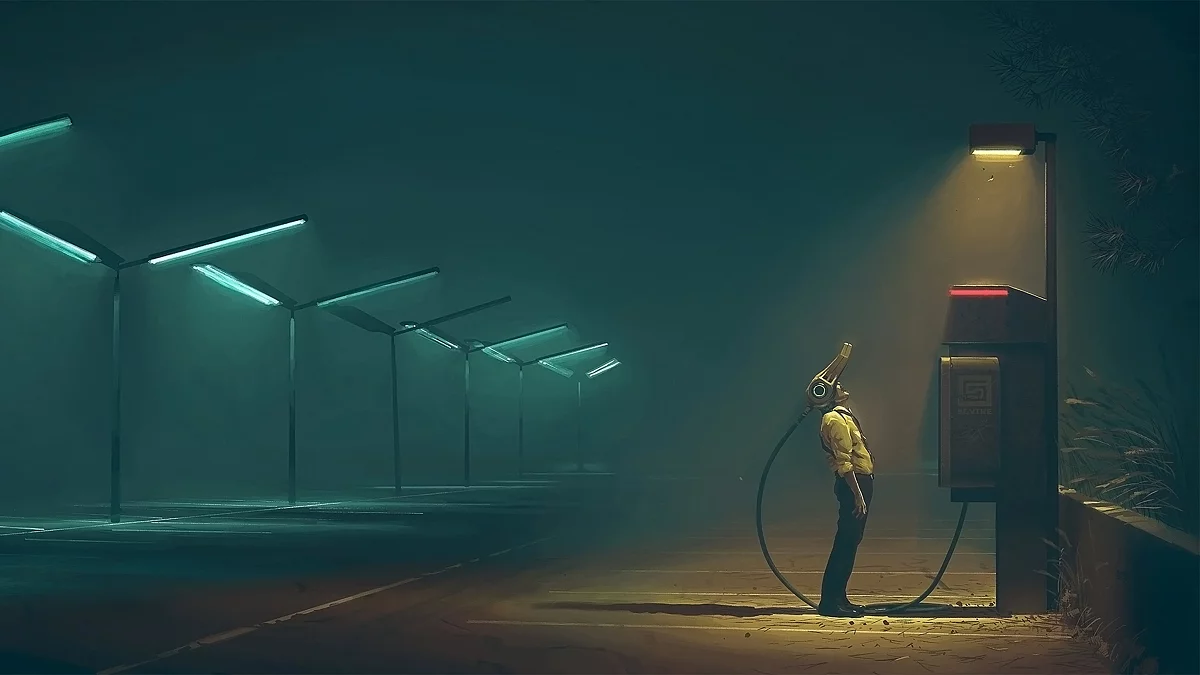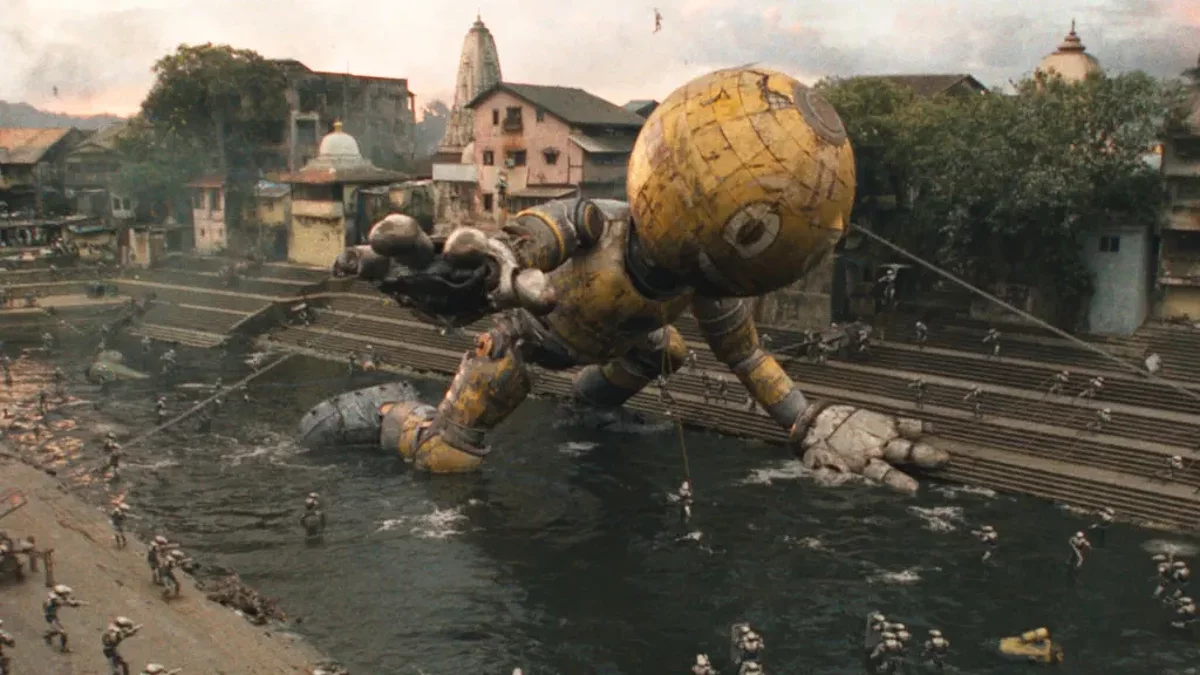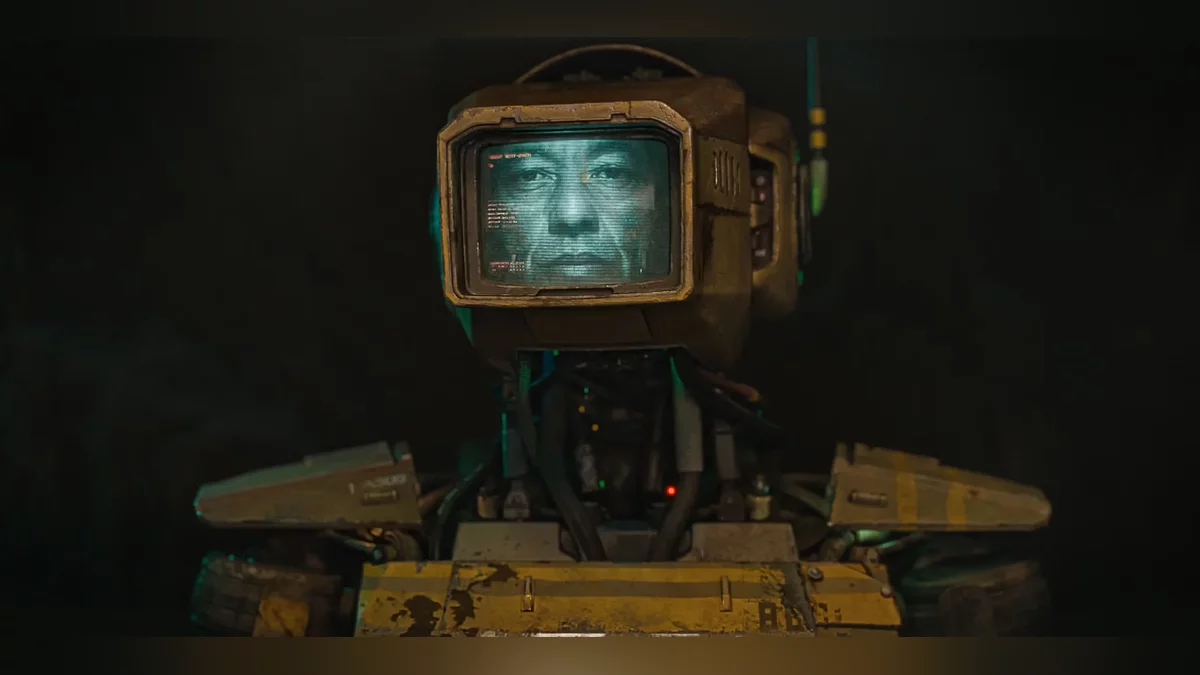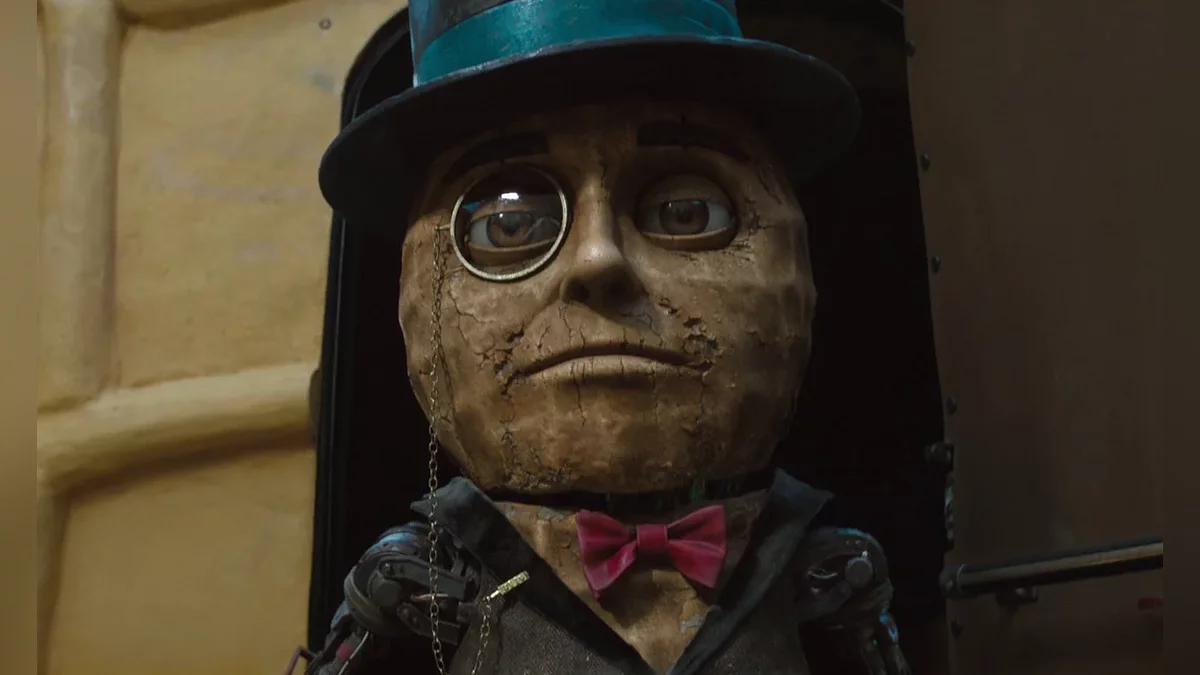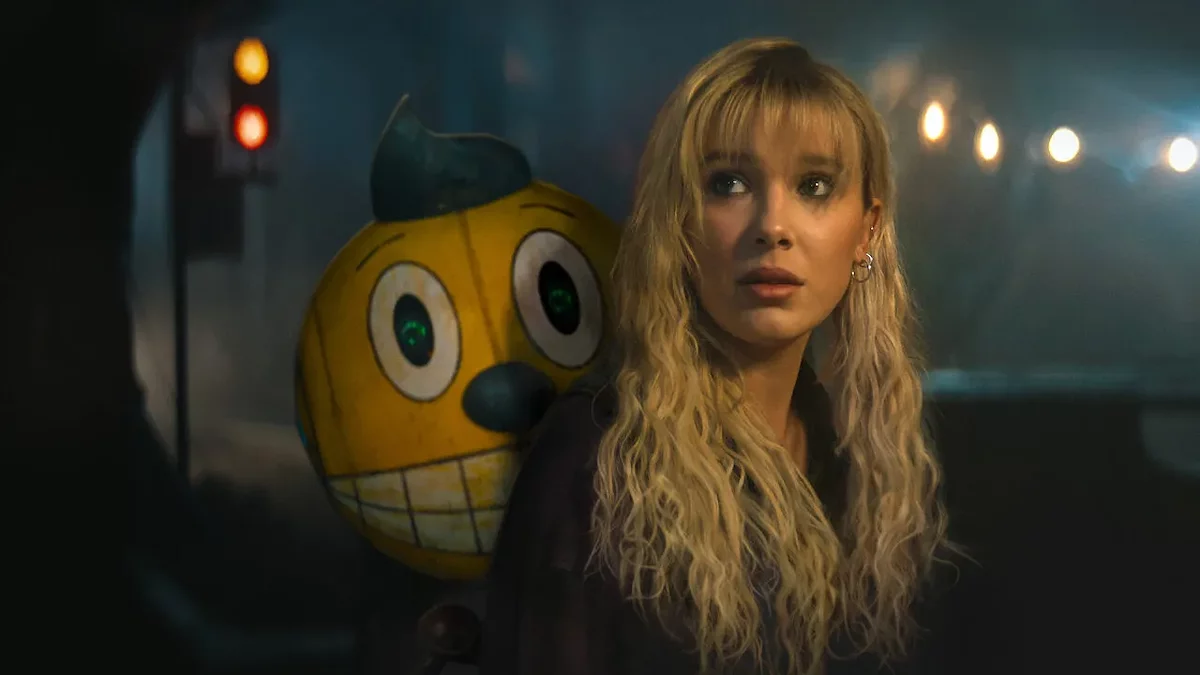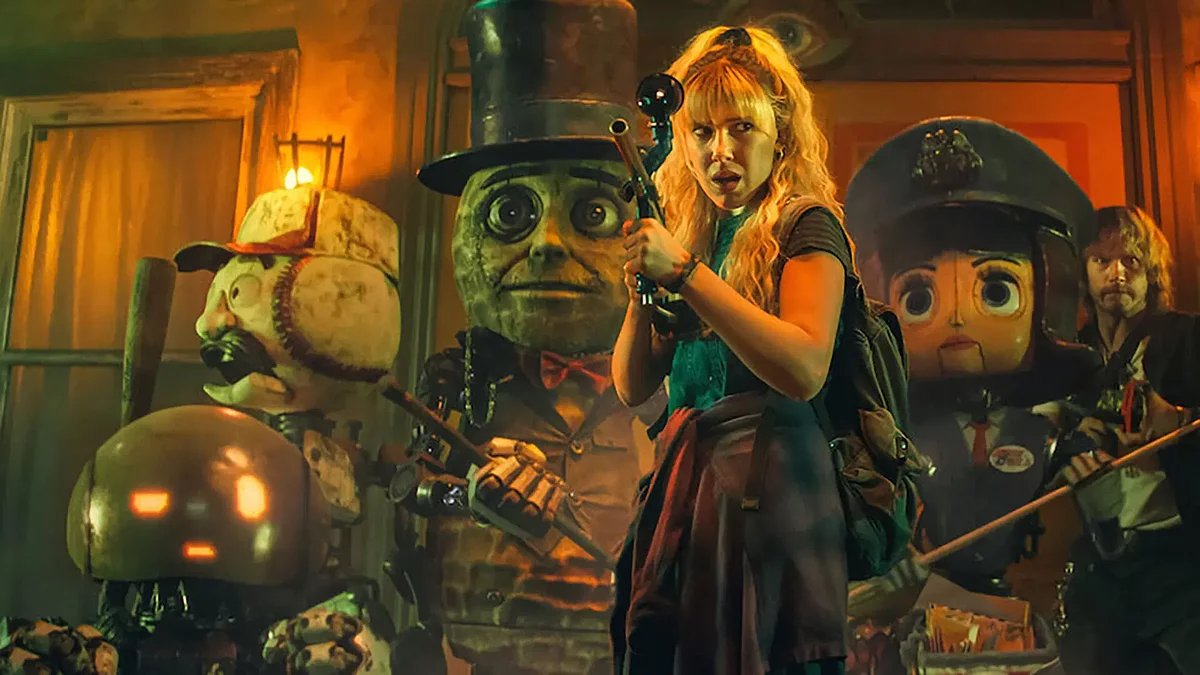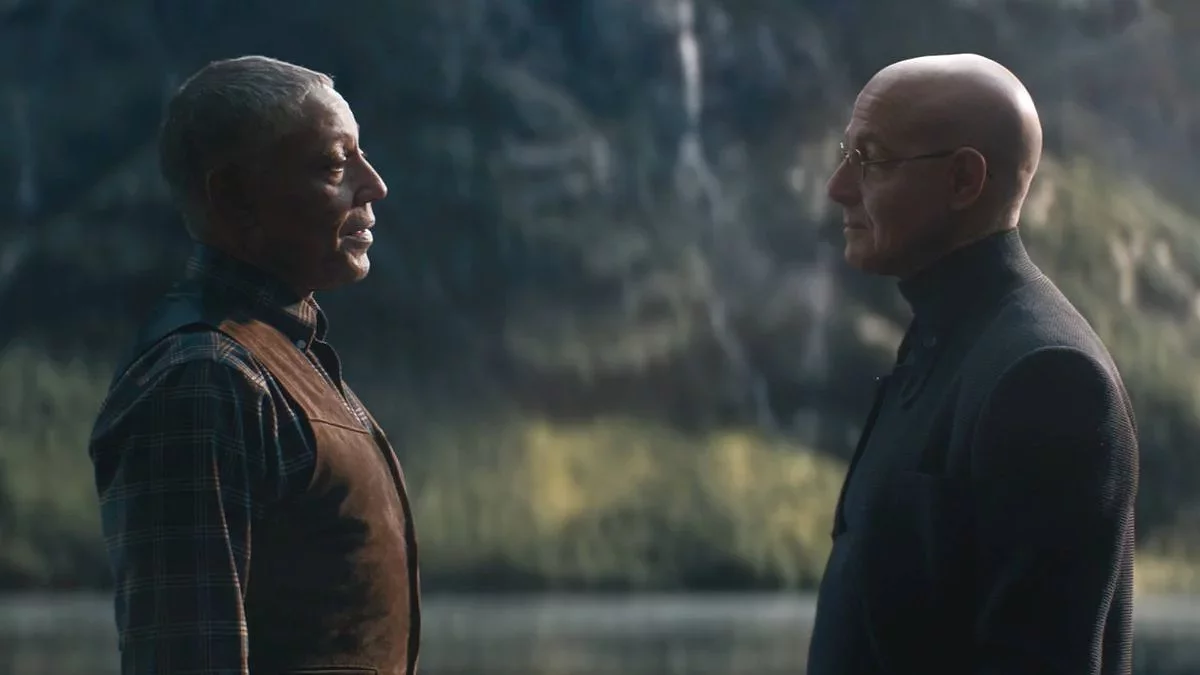The Electric State Review — action-adventure film by Russo brothers
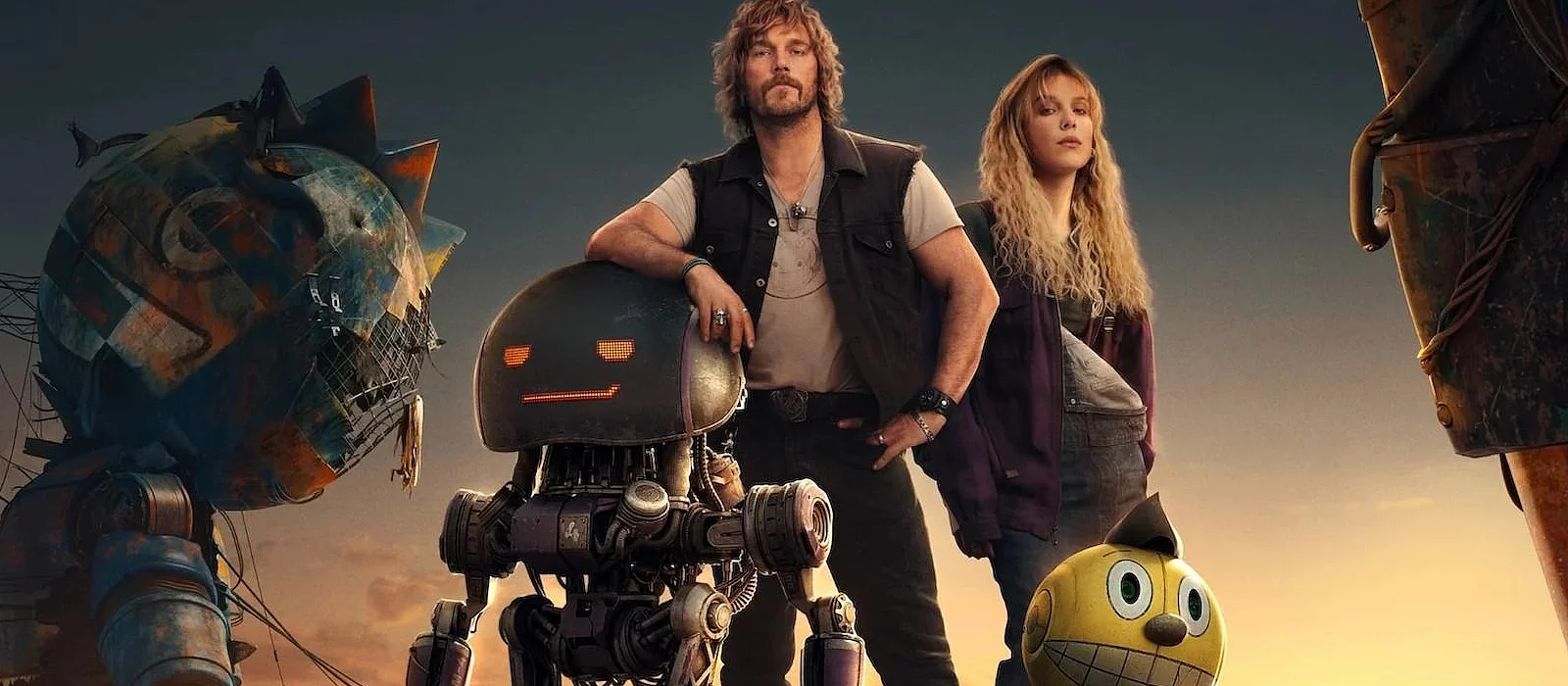
The Electric State — a new release from Netflix, directed by the famous Russo brothers. The event itself is intriguing, as after working on Avengers: Endgame, the pair hasn't released any outstanding films. Before the premiere, we knew almost nothing about the upcoming movie, so we watched the project from scratch, without impressions formed by trailers, leaks, and promotional posts. Moreover, the streaming service consistently delivers feature films filled with agendas but lacking depth and captivating plots. This significantly lowered expectations. What was the result, and is it worth spending time on The Electric State — more details below.
In the beginning, as usual, a bit of exposition. The film is based on the graphic novel by Simon Stålenhag — a Swedish artist, musician, and designer. It's evident that with all his numerous talents, Stålenhag is anything but a writer, yet this didn't stop him from writing this very graphic novel.
In fact, this approach is a consequence of a significant problem that has long existed between comic book writers and artists. The author of a story may be a brilliant storyteller but will never present a comic or graphic novel to the world unless they convince an artist to work on it. Moreover, they would have to negotiate with the artist, pay money before seeing results, and explain why what the artist did doesn't align with the author's vision and why it needs to be redrawn.
Naturally, as a result of such work, some misunderstood geniuses of the brush might abandon the project halfway through. After which, these artists become convinced that writers are useless and that it's much easier to create comics on their own, drawing their own stories without answering to anyone. You probably already understand where we're going with this. Stålenhag is a wonderful artist who has long specialized in a unique branch of post-apocalypse, but a completely inept writer, making many mistakes typical of beginners.
For example, he doesn't develop the main characters, not even drawing close-ups of them. Some spreads have no text at all, there are no explanations for numerous terms, concepts, or conditions, and there is no explanation of the world either. The book "The Electric State" is a cumbersome yet still high-quality art book with a claim to some sort of authorial statement, which some reviewers, of course, found, although it was unlikely to be there.
Knowing all these nuances, you look at the film quite differently. Professional screenwriters Christopher Markus and Stephen McFeely did a tremendous job turning a collection of art into a coherent, albeit very simple story. We give them credit for that. It's important to remember this as we continue discussing the new release.
What do you think of the post-apocalyptic setting in the book The Electric State?
It's the early 1990s. Humanity has taken a path of development different from real history and has delved into robotics. They won't explain how this happened; we just accept it as a fact. New automatons quickly became an integral part of absolutely all life processes. Moreover, development didn't stop; it accelerated. Soon, the robots became so advanced that they recognized themselves as individuals and started rallying for civil rights.
The result of such an evolutionary leap was a war in which humans were decisively losing. This continued until a brilliant inventor, Ethan Skate, created neurocasters — devices reminiscent of the VR headsets we know. They somehow split a person's consciousness into two streams. The first enjoyed virtual pleasures, while the second could control an iron suit, performing combat tasks and solving household problems.
Think about the concept of split consciousness. How does it work? How can it be shown on screen? The thing is, the book has no visualizations. Yes, people massively connected to virtual headsets, looking like zombies, are conceptual and look good in the artwork. However, the details of what exactly all the neurocaster users see at that moment are not provided.
The filmmakers had to improvise, so despite the claim of split consciousness, we are most often shown the same possible scenario for using the headsets — controlling iron suits. Previously used in war, they are now used for domestic needs. This generally seems logical and raises no questions, until a scene shows a man simultaneously chilling on the couch and yelling at his adopted daughter. When the "inner world" of the headsets is shown, we see an almost complete visualization of the Matrix from the Wachowski sisters' film of the same name. Quite a mix.
Be that as it may, the war ends, and all the robots, led by their ideological leader Mr. Peanut (don't laugh, this is a serious character), are sent to the exclusion zone.
Parallel to this, the story of the main character, Michelle, unfolds. She is played by Millie Bobby Brown Bongiovi. The girl was just an ordinary teenager until her parents and brother died in a car accident. From that moment, Michelle suddenly turns into an alt-girl, ends up in a foster family, and hates everyone.
According to the plot, the girl survived the machine uprising, but it hardly affected her or her life. Don't expect any PTSD, just trauma from the loss, and not of her parents, but only her brother. It must be said that Millie still handles the roles of ninth-graders quite well, but her unique approach to makeup, which adds about 5-10 years, makes the character look significantly older. In case you didn't know, Bobby Brown was very concerned about being too young for the success of her Eleven in "Stranger Things." She couldn't wear a dress with a neckline or participate in sexy photoshoots. In a hurry, the girl found stylists who aged the actress in every possible way so that people wouldn't feel awkward bringing a child to all the social events.
Apparently, the habit remained, and recently there was a new wave of discussion about Millie's appearance on the internet. The girl, who is already married, by the way, even had to speak out, saying that she is growing up and people should accept it. However, the actress is being a bit disingenuous, because if you look at her social media, it's clear that without makeup and professional retouching, she still looks much younger than she wants to appear.
In any case, after the war in the film, the United States is almost indistinguishable from the real one, although the book contains many scenes of universal devastation and desolation. Moreover, the creators of the film do not pay any attention to scenes depicting everyday life. How does the economy work if everyone is hooked on virtual reality? Do they pay salaries if you go to work in armor, and what kinds of jobs exist — all of this would be interesting to find out, but alas. Meanwhile, the original world was depicted by the artist as an exemplary cyberpunk apocalypse, which is completely absent in the film.
One day, a robot comes to Michelle's house, looking exactly like her brother Chris's favorite cartoon character — little Cosmo. By the way, how did it even find her? The android doesn't speak properly, but it tries its best to explain that Chris is actually alive and that he needs to be found in the very exclusion zone — the robots' habitat. Michelle quickly believes this and abruptly leaves her foster father for nowhere.
However, the main characters don't end there. Michelle is joined by a former military man, now a smuggler named Keats (played by Chris Pratt), who is involved in shady schemes with a robot named Herman. Chris Pratt is a good actor, who excels in comedic roles, but the problem is that his Star-Lord from Guardians of the Galaxy turned out to be so cool and well-rounded that all his future characters resemble him. And Keats is literally Star-Lord, and the droid Herman is his Rocket.
The plot develops quickly, so it soon becomes clear that some high-ranking military officer is chasing the girl. Here's another problem, as the motivations of the robot killer, nicknamed the Butcher (fortunately not from Blaviken), are essentially non-existent. A small scene where Michelle's foster father tries to call the police is not an answer. Do they really send veterans to every call? Only in the middle of the film does Skate contact the Butcher and ask him to capture Cosmo. In the original source, someone was also chasing the pair, but, like much else, without clear explanations of "why." The entire Butcher storyline feels like a fifth wheel.
The main advantage of the film can be considered the robots themselves. The Russo brothers paid special attention to the graphics, so the androids are creatively designed, all very different and, more importantly, lively. A very decent level that hasn't been seen in cinema for a long time. We especially liked the barber robot, who desperately searches the exclusion zone for someone to give a haircut.
At the same time, the action itself is standard. The battle scenes don't go beyond "pew-pew," so they are unlikely to impress. This could be tiring if there were many such scenes in the film, but fortunately, more attention is paid to interaction and dialogue. It's interesting to follow the characters, and the simple but natural motivation doesn't raise many questions. The story ends exactly where it should, without any tedious stretching of the runtime.
***
In the end, The Electric State became an ordinary movie for the evening. An average rating of 6 points on various aggregators confirms this. Honestly, there's cause for concern, as the director brothers face a huge task in reviving the Marvel Cinematic Universe, but it's not certain they will succeed. Nevertheless, the film turned out to be solid and capable of entertaining. Especially considering how hard the screenwriters worked. Not the worst investment by Netflix.
Have you had a chance to watch The Electric State?

